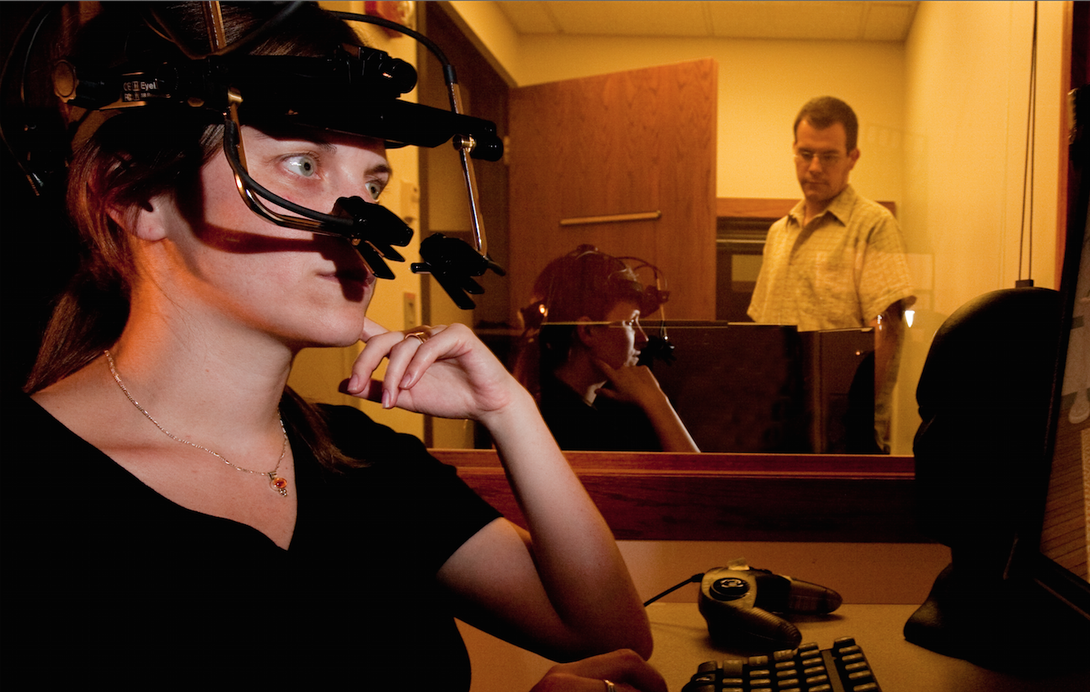
Political stances defined as “left” or “right” have no physical spatial connection. The use of the terms in political discourse can be traced back to 18th-century France, when supporters of the revolution sat to the left in the National Assembly, while supporters of the king sat on the right.
Three centuries later, American political ideologies using the terms “left” or “right” have affected the allocation of attention and the manner in which people move their eyes, a new UNL study shows.
UNL graduate student Mark Mills worked with Michael Dodd, associate professor of psychology, and political scientists John Hibbing and Kevin Smith on an eyetracking study that suggests people are faster and more likely to respond to the right or left based on how they process the ideologies of various political figures.
There is substantial evidence in past studies that a variety of overlearned spatial stimuli can influence attention even when they are irrelevant to your tasks, Dodd said, and this new study provides evidence that political ideologies labeled as left or right can have the same effect.
“One of the themes of our lab has always been looking at the influence of various stimuli on attentional allocation,” he said. “There are numerous things that shift you left and right, like arrows and gaze cues or numbers. This is an extension of that, though a uniquely novel one given the lack of connection between politics and physical space. You don’t necessarily think of left and right in politics as it relates to space, even though it’s commonly hit with those tags.”
The idea for the study came to Mills after he noticed Smith, his political science professor, often hung photos of political figures in line with their political ideologies. In other words, President Barack Obama always ended up on the left side of the room, while former President George W. Bush was hung on the right.
“I thought there might have been some basis for doing that, but he didn’t realize he was doing it,” Mills said.
The study was conducted in two phases. In the first, the research subjects were shown a picture of a well-known political figure, followed by a target on either side of the screen. When the research subjects located the target, they were asked to press a space bar.
“The picture did not predict where the target would be at all, so the idea is if you’re processing the ideology stimulus of a political figure, and it happens to be a liberal person, it activates the leftwards space and you would be faster to respond to the target on the left, and when you see it on the right, you would be slower,” Mills said. “They call that the attentional cueing effect.”
In the second experiment, a separate set of research subjects looked at a picture of a political figure and were asked to make a voluntary eye movement left or right. Results showed that the political ideology represented by the photo could influence their choice of looking left or right. They are more likely to look left following a Democratic image, or right following the presentation of a Republican image.
“What the results are basically showing is that there is spatial representation in processing political ideologies,” Mills said.
Dodd and Mills said the results are somewhat surprising, except for the fact that the terms left and right are abstract terms when used in political discourse.
“It’s a completely arbitrary spatial association,” Mills said.
The study was published Oct. 7 in the journal Behavioural Brain Research.







